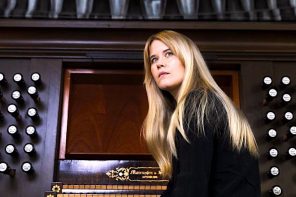At 19, home from college and partying at a friend’s house while the parental units were away, I deliriously watched Ken Russell’s film Tommy (1975), based on The Who’s rock opera from 1969. I was, and still am, a Who fan, and their 1971 Who’s Next remains one of my desert island discs.
And I remember, somewhere in the mid- to late-1970s playing the Tommy pinball game, with an imposing image of the “Pinball Wizard” at the top. In Russell’s film, Elton John played the Pinball Wizard, back when Elton was still cool and weird (and cool because he was weird), wearing huge eyeglasses and stilts.
I recall these images as some of my first revelries into the psychedelic and surreal; images that have become etched into my mind’s eye for life.
Some restless years later I remember watching Russell’s Whore (1991), toward the end of my college years, by myself. I knew enough at the time to know the film wasn’t going to be terribly titillating, despite the title, but I also realized it might best be watched alone. (I was right on both accounts.) Sometime later the name Ken Russell stuck in my head and I tracked down his earlier films, Gothic (1986), of which the cover image alone was enough to creep me out for a while, and Altered States (1980), which today is not so alternative as simply part of the imposing future (see Robert Geraci’s RD piece The Cult of Kurzweil: Will Robots Save Our Souls?).
My personal experiences connect with Russell in that I came of age in the 1970s-’80s, at a time when pop music and film were undergoing some critical and creative transformations. This is the time when Lucas, Spielberg, and Scorsese each made their names with provocative new film styles that have set the stage for everything in the following three decades. There would be no Matrix or Avatar without Star Wars; no Terminator or Tron without Close Encounters; no Fight Club without Mean Streets.
Though a generation older than that directorial triumvirate, Russell’s first important, feature-length films (e.g., the 1969 Women in Love, and Tommy) began appearing contemporaneous with Mean Streets (Scorsese, 1973), THX 1138 (Lucas, 1971), and Jaws and Close Encounters (Spielberg, 1975, 1977). Russell never made it big like the others, by the end of the ’80s he was making almost entirely “made-for-television” movies. Yet his style has endured.
Russell is continually, even post-mortem, called “provocative,” “controversial,” and “iconoclastic.” And at least a few of these obits have noted his conversion to Roman Catholicism all those years ago, though he was never quite settled in his faith. Certainly there was religious content in his films—the nuns and priests in a sexual standoff in The Devils (1971), Anthony Perkins’ creepy street preacher in Crimes of Passion (1984)—but it was the human experience that Russell so strangely charted that leaves me thinking of his “religious” nature. He portrayed the depths of human depravity and desire, of lust and liking.
And maybe, ultimately, it was his connection to music, the “audio” of the audiovisual medium of film, that made him snatch some element of human experience that is sometimes inexpressible in words. Russell was clued in to a rock and roll generation—à la Tommy—but seems to linked this audiophilia to a much longer tradition, and his string of films about individual composers (1974’s Mahler, 1975’s Lisztomania, 1983’s The Planets, based on Gustav Holst’s music) shows a deep interest in music.
Like the contemporary director Wim Wenders, but perhaps more like the 19th-century artist Richard Wagner, Russell saw and heard and felt and touched the experiences of art, and sought to make the aesthetic dimensions of life real to the rest of us.



